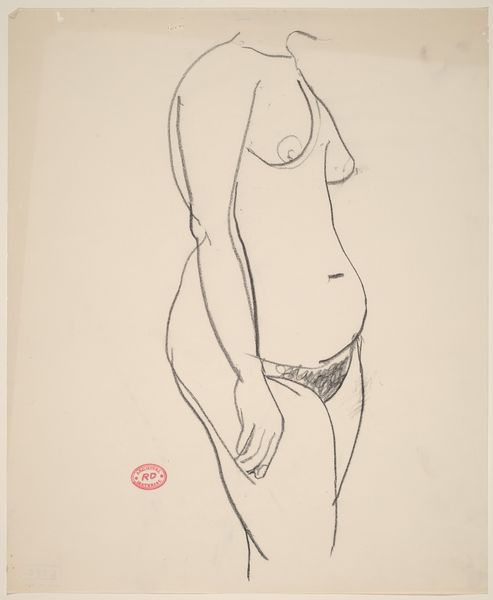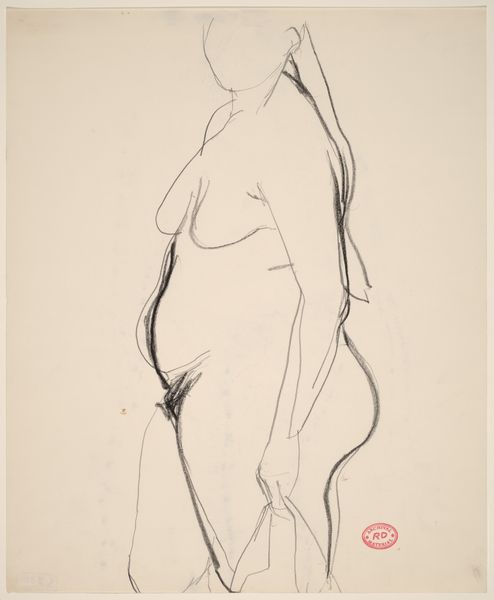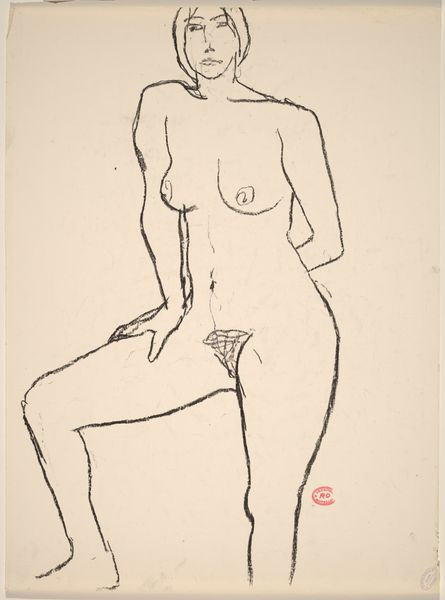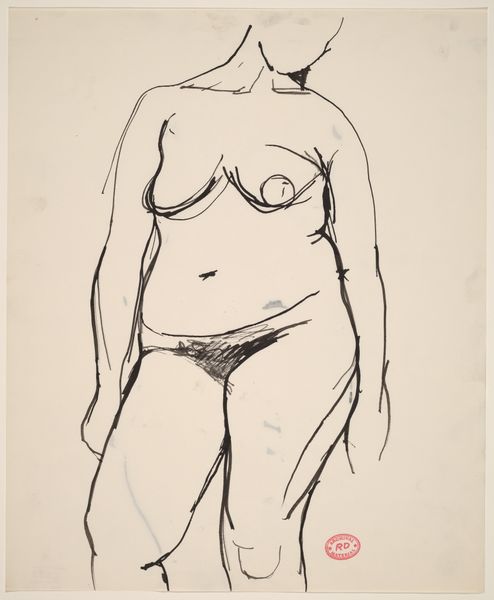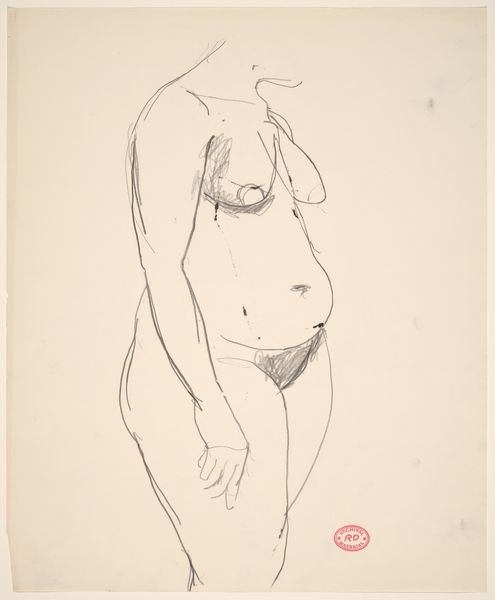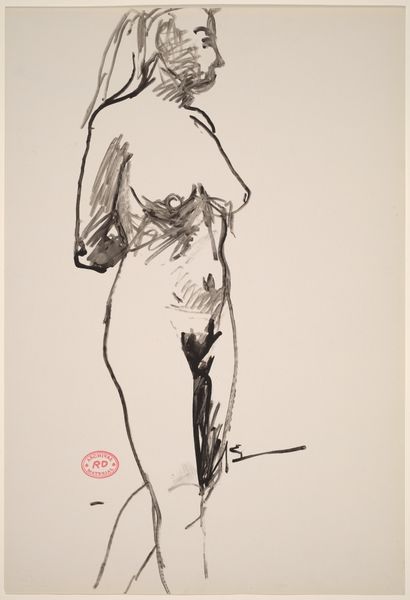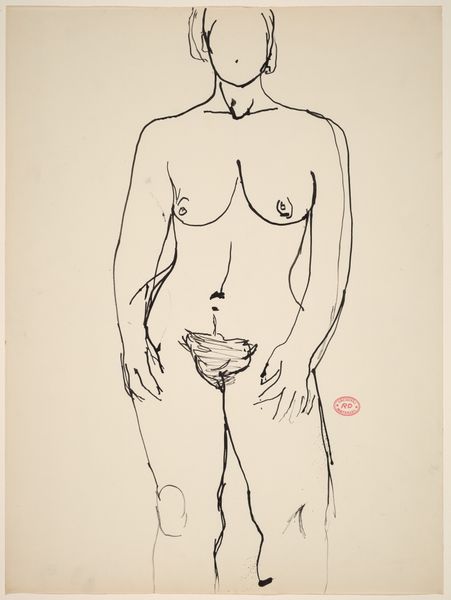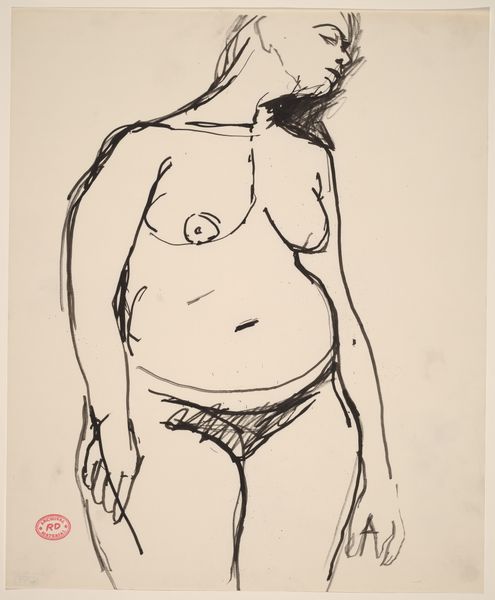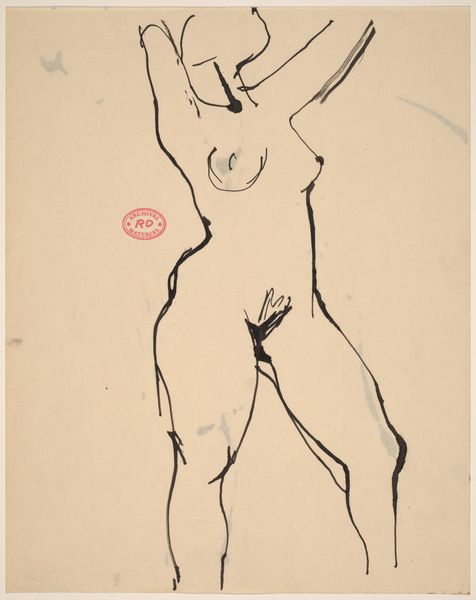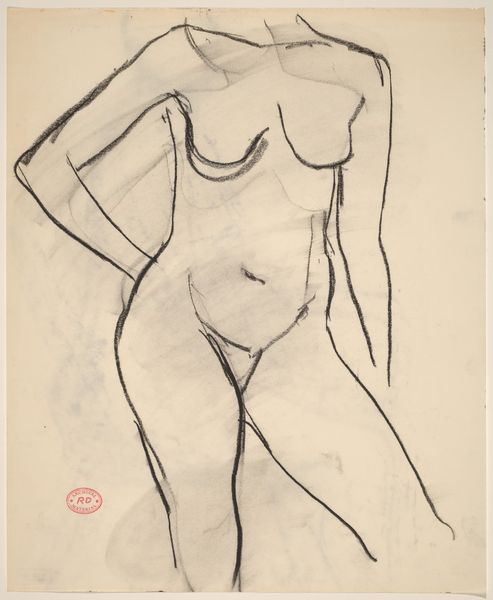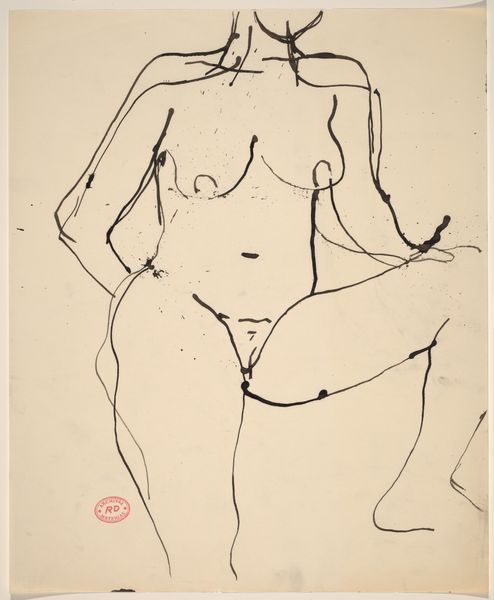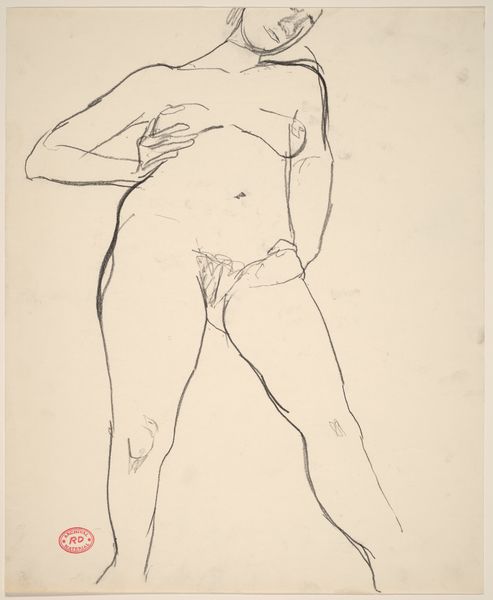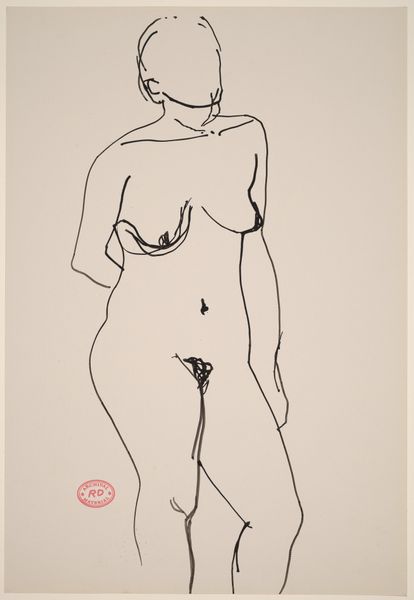![Untitled [standing female figure turned to the right] by Richard Diebenkorn](/_next/image?url=https%3A%2F%2Fd2w8kbdekdi1gv.cloudfront.net%2FeyJidWNrZXQiOiAiYXJ0ZXJhLWltYWdlcy1idWNrZXQiLCAia2V5IjogImFydHdvcmtzLzUwMmZjMWU0LTQ5OGYtNDg5Ny04OTk4LWY2NTVmMzljY2Q5Yi81MDJmYzFlNC00OThmLTQ4OTctODk5OC1mNjU1ZjM5Y2NkOWJfZnVsbC5qcGciLCAiZWRpdHMiOiB7InJlc2l6ZSI6IHsid2lkdGgiOiAxOTIwLCAiaGVpZ2h0IjogMTkyMCwgImZpdCI6ICJpbnNpZGUifX19&w=3840&q=75)
Untitled [standing female figure turned to the right] 1955 - 1967
0:00
0:00
drawing, charcoal
#
drawing
#
ink drawing
#
figuration
#
bay-area-figurative-movement
#
charcoal
#
nude
Dimensions: overall: 42.9 x 35.2 cm (16 7/8 x 13 7/8 in.)
Copyright: National Gallery of Art: CC0 1.0
Curator: Here we have an untitled figure drawing by Richard Diebenkorn, likely created between 1955 and 1967, rendered in charcoal and ink. Editor: It has such a stark, intimate feeling, doesn’t it? The simple black lines against the bare page capture something vulnerable, yet also powerful about the female form. Curator: I agree. Look at how Diebenkorn uses line weight – thick and assertive in places, almost disappearing in others – to suggest form and shadow. The composition directs our eye smoothly from the top of her head, down along her shoulder, around her torso. Note how little detail he uses, yet the body feels complete. Editor: It's also striking how her gaze is directed away from the viewer. What do you think this signals in the wider narrative? It evokes an introspective state; it resists the traditional objectification often associated with the nude, especially considering the years of the Civil Rights movement in which Diebenkorn made the art. The subtle curve of her stomach may indicate motherhood, something society often imposes as a norm, and could be connected to domestic space. Curator: That's a thoughtful perspective. Structurally speaking, the drawing relies on a dynamic tension between positive and negative space. The whiteness of the page is just as crucial as the charcoal lines; this strategic emptiness shapes and defines the figure and guides our eyes across the two-dimensional picture plane. It reminds me of analytic cubism, with the simplification of forms to essential lines and angles, but imbued with an unexpected sensuality. Editor: I read her averted gaze instead as active resistance of the colonial gaze. It resists a narrative which renders women as docile and mute and challenges its presumptions. Instead, it claims interiority; it speaks for her own subjectivity in her terms and demands that society hear it. Curator: That is a compelling idea. In any case, there is undeniable depth here. Even through Diebenkorn's distilled method of depiction, the essence of this individual emerges. Editor: Absolutely. It also raises timely questions about the expectations imposed on female-presenting people during that decade, allowing us to reflect on what is still the case today. A striking drawing.
Comments
No comments
Be the first to comment and join the conversation on the ultimate creative platform.

